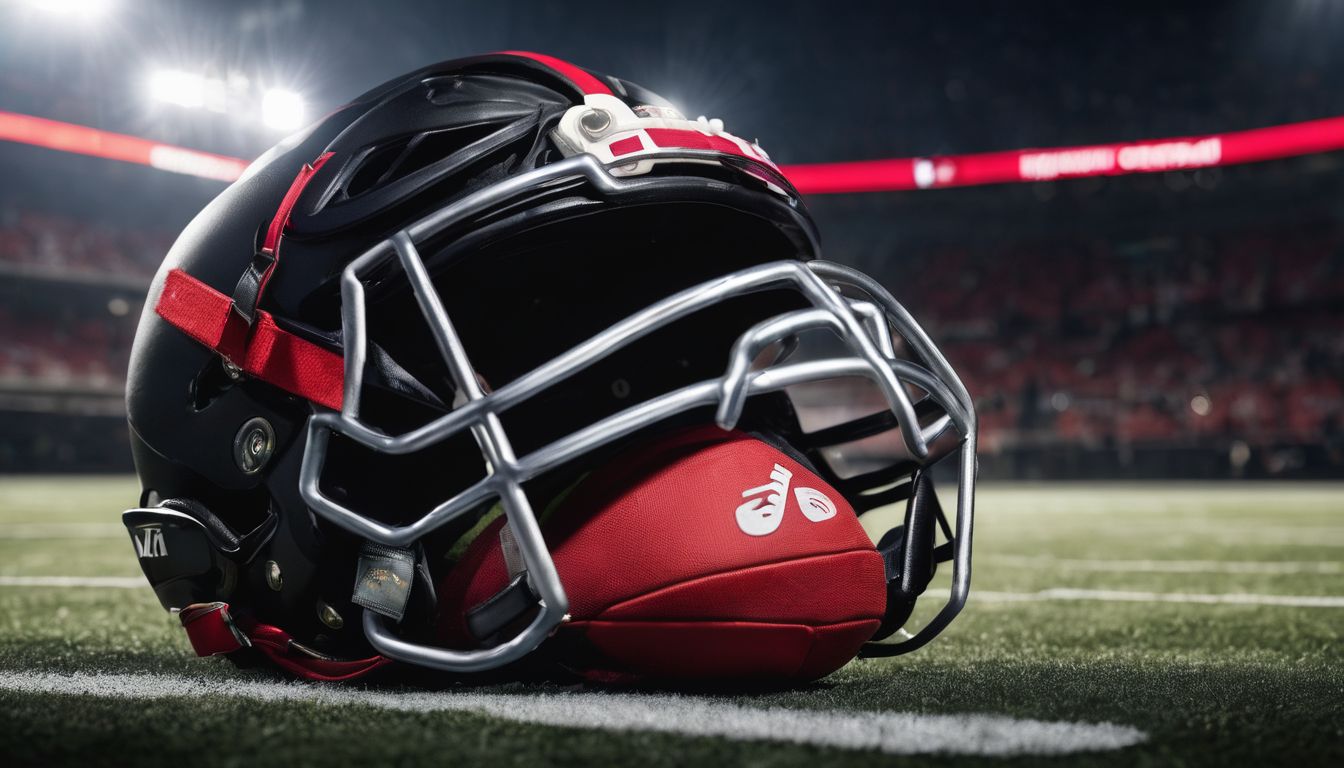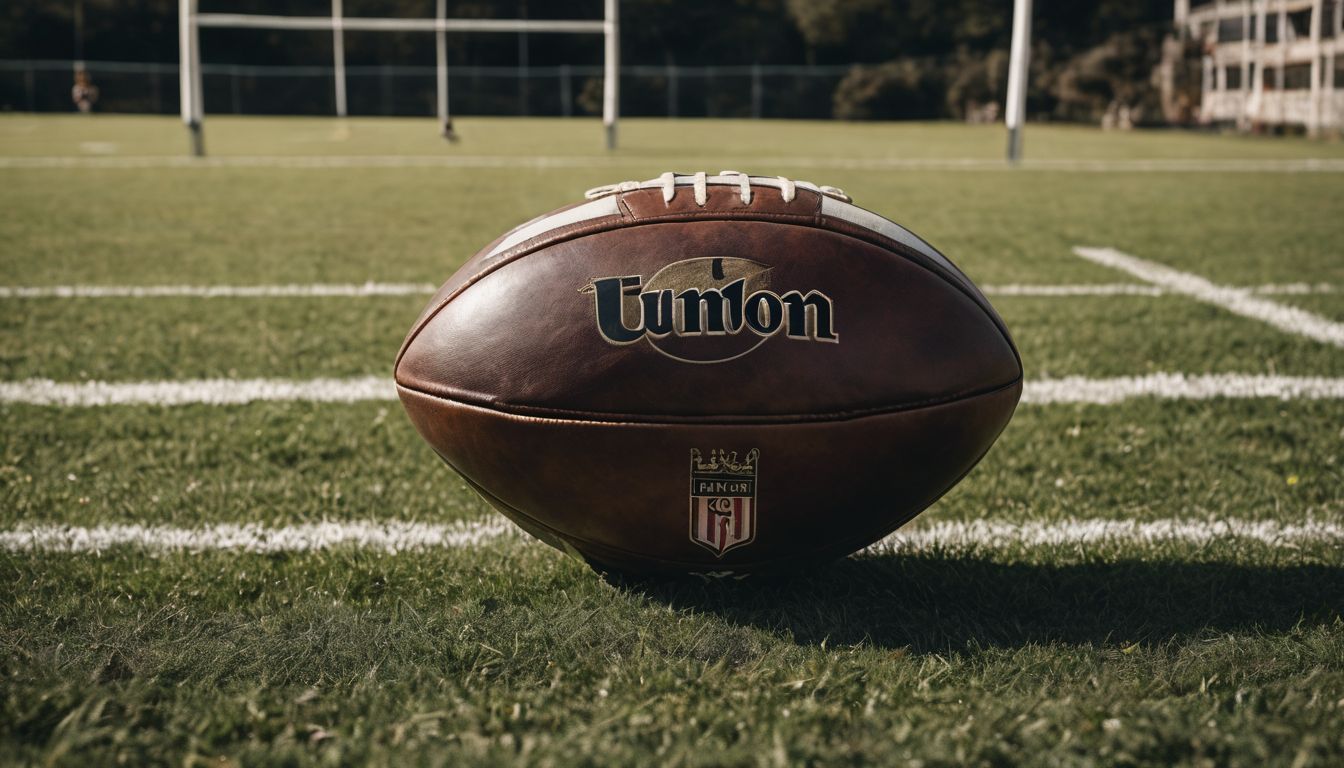Getting fit for rugby isn’t just about running more laps around the pitch. Research shows that targeted strength and conditioning can drastically improve your game on the field. Our blog dives into time-honed techniques from elite coaches to boost your strength, endurance, and skillset specifically for rugby.
Read on if you’re ready to tackle your fitness goals head-on!
Key Takeaways
- Incorporate exercises like front squats, deadlifts, presses, and rows into your rugby training regimen to build functional strength vital for match performance.
- Implement passing drills and silent running exercises in coaching sessions to enhance players’ accuracy, agility, and strategic movement on the field.
- Use running circuits that combine sprinting with agility activities to boost endurance and mimic the high-intensity nature of rugby gameplay.
- Adopt recovery strategies including proper nutrition and rest to repair muscles and maintain energy levels for peak athletic performance.
- Balance training load effectively by managing workout intensity and frequency while ensuring adequate fuel from a well-planned diet.
The Importance of Functional Strength Training for Rugby
Functional strength training is crucial for rugby players as it helps to develop power, agility, and endurance. Incorporating exercises like squats, deadlifts, presses, and rows can help in working multiple muscle groups simultaneously.
Exercises to include (squats, deadlifts, presses, rows)
Rugby demands players have a high level of functional strength and power. Incorporating exercises like squats, deadlifts, presses, and rows into a training programme builds the muscular foundation required for this physically demanding sport.
- Squats target your legs, which are essential for sprinting and tackling on the pitch. A solid base is crucial; focus on front squats to engage your core and improve balance.
- Deadlifts develop explosive strength needed during scrums and rucks. Always ensure your form is correct to maximise gains and prevent injury.
- Presses work on your upper body, improving pushing movements in contact situations. Include variations such as the barbell bench press for comprehensive strength.
- Rows are key for building a sturdy back, enhancing your ability to drive forward against opponents. Use dumbbells or barbells to perform these and maintain a strong posture throughout.
Benefits of working multiple muscle groups
Working multiple muscle groups in your training routine not only helps to build overall strength but also improves coordination and stability. Engaging different muscles simultaneously promotes functional fitness, essential for rugby players who require dynamic movements on the field.
By incorporating exercises like squats, deadlifts, presses, and rows into your workout plan, you can effectively target various muscle groups, enhancing your athletic performance and reducing the risk of injuries during play.
Moreover, working multiple muscle groups in a single exercise maximises efficiency by allowing you to achieve more in less time. This approach optimises your training sessions while ensuring a balanced development of muscles throughout your body.
Integrating compound movements that engage multiple muscle groups at once will help you develop total-body strength tailored to the demands of rugby. With this comprehensive approach to training, you’ll be better equipped to tackle the physical challenges unique to rugby and enhance your overall on-field performance.
Top Tips for Coaching Key Rugby Skills
Improve passing accuracy, speed and decision making with specific drills. Teach players to use non-verbal communication while running plays. Increase fitness and endurance through running circuits focusing on agility and change of direction.
Passing
Effective passing is a crucial skill for rugby players, essential for maintaining possession and orchestrating attacks on the field. To improve passing accuracy and timing, players can practice short and long passes with precision.
Incorporating passing drills into training sessions can enhance decision-making under pressure, helping players develop their ability to execute accurate passes in game situations.
It’s important to focus on hand positioning and wrist action when passing the ball, ensuring it reaches its target efficiently. Additionally, incorporating passing variations such as spin passes or pop passes into training routines can help players adapt to different match scenarios.
Passing effectively requires coordination between the hands and body movement; therefore, building functional strength in the core muscles through exercises like medicine ball twists can aid in generating power behind each pass.
Silent running
Silent running is a key skill in rugby that involves moving around the field without drawing unnecessary attention from opponents. Rugby players need to be able to move quickly and quietly, allowing them to evade defenders and position themselves strategically.
This skill requires agility, spatial awareness, and the ability to change direction swiftly while maintaining balance and control. It’s an essential technique for both offensive players looking to create space for themselves and defensive players aiming to track down their opponents effectively on the field.
Rugby fans can appreciate the importance of silent running as it showcases a player’s quick thinking and evasiveness in high-pressure situations during a match. Developing this skill demands drills focused on agility, speed, footwork, and overall body control under physical pressure Keywords: Rugby fitness training; Power and agility exercises for rugby; Endurance training for rugby players.
Running circuits
Running circuits are a crucial part of rugby fitness training, focusing on building endurance and stamina while mimicking the stop-start nature of the game. These circuits involve a series of exercises performed in quick succession to challenge both cardiovascular fitness and muscular endurance. They can include high-intensity activities like sprinting, agility drills, and plyometric exercises that replicate the dynamic movements required on the rugby field.
- Sprint Intervals: Incorporating short bursts of maximal effort sprints followed by brief periods of active recovery helps develop quick acceleration and speed essential for rugby players.
- Agility Drills: Utilising ladder drills, cone runs, and shuttle runs enhance footwork, coordination, and quick change of direction necessary for evading opponents and making rapid game-time decisions.
- Plyometric Exercises: Jumping lunges, box jumps, and burpees improve explosive power and lower body strength crucial for scrums, tackles, and explosive running.
- Strength-Endurance Challenges: Including bodyweight exercises like push-ups, squats, and pull-ups within the circuit develops overall muscular endurance to sustain performance throughout a match.
- Cardiovascular Conditioning: Integrating rowing machines or stationary bike intervals into the circuit enhances aerobic capacity while simulating prolonged physical exertion typical in a rugby game.
- Simulated Game Scenarios: Running drills that replicate specific play situations such as support running off the ball or chasing down an opponent contribute to developing match-specific fitness levels.
- Recovery Periods: Strategic inclusion of active recovery periods within the circuit ensures sufficient rest between intense efforts to optimise overall performance gains while reducing injury risk.
Training Advice from the All Blacks’ Head S&C Coach
Learn valuable lessons from the New Zealand rugby team’s head strength and conditioning coach. Discover the training advice that has helped lead them to success on the field.
Lessons to be learnt from the New Zealand rugby team
The New Zealand rugby team, the All Blacks, offers valuable lessons in training techniques and performance. Their focus on functional strength training, speed development, and mental toughness sets a benchmark for aspiring rugby players.
Building strong legs, improving overall strength, and maintaining peak fitness levels are key takeaways from their training methods. The integration of weight training with high-intensity conditioning drills exemplifies their commitment to all-round physical readiness.
Additionally, their emphasis on injury prevention and recovery strategies underscores the importance of proper rest and nutrition in sustaining peak performance throughout the demanding rugby season.
The Most Important Rugby Weight Training Exercises
Include front squats, barbell bench press, deadlifts, pull-ups/chin-ups, barbell push-presses, and power cleans in your rugby weight training program. These exercises will help improve strength and power for rugby players on the field.
Front squat
The front squat is a crucial exercise for rugby players, targeting the quadriceps, glutes, and core muscles. This movement also improves upper back and shoulder strength, essential for contact situations on the pitch.
By placing the barbell across the front of your shoulders rather than behind your neck, it promotes an upright torso position and enhances overall stability. This exercise closely mimics game movements like scrummaging and tackling, making it highly beneficial for building functional strength specific to rugby.
Performing front squats can help develop explosive power for sprinting and accelerating off the mark during a match. It’s also effective in enhancing lower body endurance which is crucial for maintaining performance levels throughout a game.
Barbell bench press
The barbell bench press is a crucial exercise for rugby players as it targets the chest, shoulders, and triceps. This comprehensive movement improves upper body strength and power essential for tackling, pushing opponents, and winning scrums.
Additionally, it helps enhance overall muscle mass in the upper body while developing stability in the shoulder region. Incorporating this exercise into a rugby training program can significantly improve a player’s ability to dominate physical encounters on the field.
Furthermore, focusing on proper form and controlled movements during barbell bench presses can reduce the risk of injury and enhance performance during matches.
When performed correctly with an appropriate weight load, the barbell bench press provides an effective way to develop upper body strength required for tackling and ball-carrying situations during games.
Deadlift
The deadlift is a crucial exercise for rugby players as it targets multiple muscle groups, including the glutes, hamstrings, and lower back. It helps in building explosive power and strength necessary for tackling opponents on the field.
This exercise also aids in improving grip strength, which is essential for securely holding onto the ball during play.
When performing deadlifts, ensure proper form to prevent injury – keep your back straight, engage your core muscles and hinge at the hips while lifting. Beginners should start with lighter weights and gradually increase as they become more comfortable with the movement.
Pull-up/chin-up
To complement the deadlifts in your rugby strength workout, incorporate pull-up/chin-up exercises to enhance upper body strength and build a powerful back. These compound movements target multiple muscle groups including the lats, biceps, and shoulders, helping to improve functional fitness essential for rugby performance.
Focus on controlled repetitions to maximise the benefits of these exercises and gradually increase resistance as your strength improves.
Incorporating pull-up/chin-up exercises into your training routine can help develop the pulling muscles needed for tackling and grabbing opponents on the field. These exercises also contribute to improved grip strength which is crucial during ball-handling situations in rugby games.
Barbell push-press
The barbell push-press is a powerful exercise that builds strength and explosiveness in the upper body, shoulders, and arms. It also engages core muscles for stability and balance during the movement.
This compound exercise is essential for rugby players as it mimics the explosive pushing motion needed in scrums, tackles, and lifting others during line-outs. By incorporating the barbell push-press into training routines, athletes can develop increased shoulder stability, power generation from the lower body, and overall upper body strength to excel in rugby.
Rugby fans should note that proper technique is crucial when performing the barbell push-press to prevent injury. Strong legs are vital for generating upward force while driving through your heels during the lift.
Power clean
The power clean is a crucial exercise for rugby players, focusing on explosive strength and full-body coordination. This dynamic movement involves lifting the barbell from the floor to shoulder height in one swift motion, engaging muscles throughout the body, particularly the legs, hips, back, and shoulders.
It helps develop power and speed necessary for quick movements on the field and enhances overall athletic performance. Incorporating power cleans into a rugby workout plan can significantly improve an athlete’s ability to generate force during sprints, tackles, jumps, and directional changes.
Additionally aiding in injury prevention while enhancing acceleration and agility.
Managing Training and Recovery
Proper rest and recovery are crucial for rugby players to perform at their best. Balancing training load and nutrition play a key role in keeping the body fuelled and ready for intense match play.
Importance of proper rest and recovery
Rest and recovery are crucial for rugby players to perform at their best. Adequate sleep, proper nutrition, and active recovery techniques help in repairing the body and reducing the risk of injury.
During rest periods, muscles rebuild and strengthen while the body replenishes energy stores. This ensures that athletes can maintain peak performance levels during training and matches.
Additionally, effective recovery strategies include hydration, stretching, and low-intensity activities to promote circulation and reduce muscle soreness.
Recovery also plays a vital role in preventing burnout and overtraining. Overworking without adequate rest can lead to fatigue, decreased motivation, increased risk of injury, and poor performance on the field.
Balancing training load
Balancing training load is crucial for rugby players to prevent overtraining and injuries. It involves carefully managing the intensity, duration, and frequency of workouts to ensure adequate recovery time.
This allows muscles to repair and grow stronger, improving overall performance on the field. Nutrition plays a key role in supporting training load balance, providing essential fuel for workouts and aiding in post-exercise recovery.
Striking a balance between training and rest is vital to avoid burnout or fatigue among rugby players. By incorporating sufficient rest periods into their fitness drills, athletes can optimise their performance while reducing the risk of injury.
Nutrition for fuel and recovery
To perform at their best, rugby players need to fuel their bodies with the right nutrients and recover effectively after training and matches. A diet rich in carbohydrates, proteins, and healthy fats provides the necessary energy for intense workouts and games.
Foods like whole grains, lean meats, fruits, vegetables, and nuts are essential for maintaining energy levels during training sessions. Additionally, adequate hydration is crucial for optimal performance and recovery.
After intense exercise or matches, consuming a combination of protein and carbohydrates helps repair muscles and replenish glycogen stores. This aids in faster recovery so that players can bounce back stronger for the next session or game.
Conclusion
In conclusion, top rugby strength and conditioning coaches emphasise the importance of functional strength training to enhance performance on the field. Training techniques such as front squats, deadlifts, and power clean play a crucial role in developing strong legs and overall athletic ability for rugby players.
Coaching tips focusing on key skills like passing and silent running are essential for honing players’ abilities. By incorporating these training methods and exercises into their routines, rugby athletes can improve their physical capabilities to excel in the sport.
FAQs
1. What kind of training techniques do top rugby strength and conditioning coaches recommend?
Top coaches opt for functional training that mimics real-life rugby actions on the pitch, focusing on building strength, acceleration, speed, and injury prevention.
2. Why is diet important for rugby players?
A rugby player’s diet fuels their performance, providing the necessary energy and nutrients to support intense exercise programmes and in-season training demands.
3. How does in-season training differ from off-season workouts?
In-season training involves maintaining high performance while managing fatigue; it often includes specific coaching strategies tailored to keep players at peak condition during matches.
4. Can these coaching methods help with speeding up a player’s movement?
Yes! Acceleration and speed training are key components of rugby fitness; they’re crucial for outpacing opponents on the field through explosive movements.
5. Aside from physical qualities, what other aspect do conditioning coaches emphasise in their programmes?
Coaches stress mental toughness just as much as physical readiness; they use various techniques to build resilience under pressure and ensure players stay focused throughout games.









